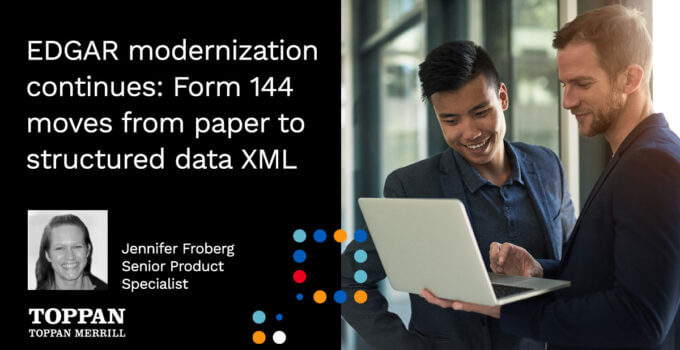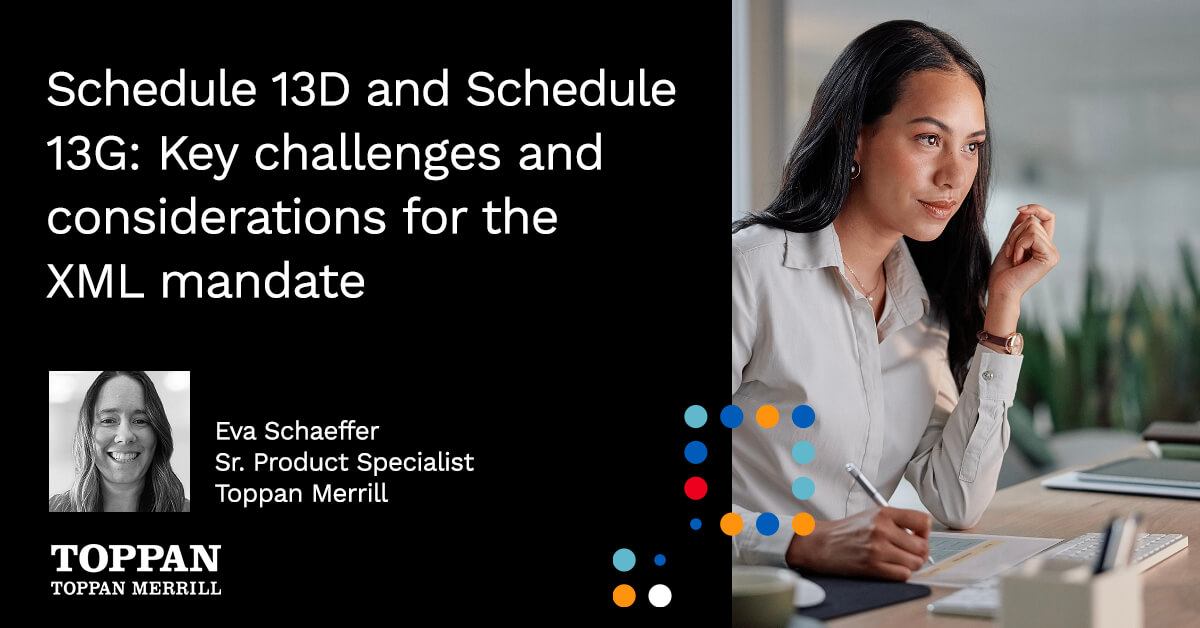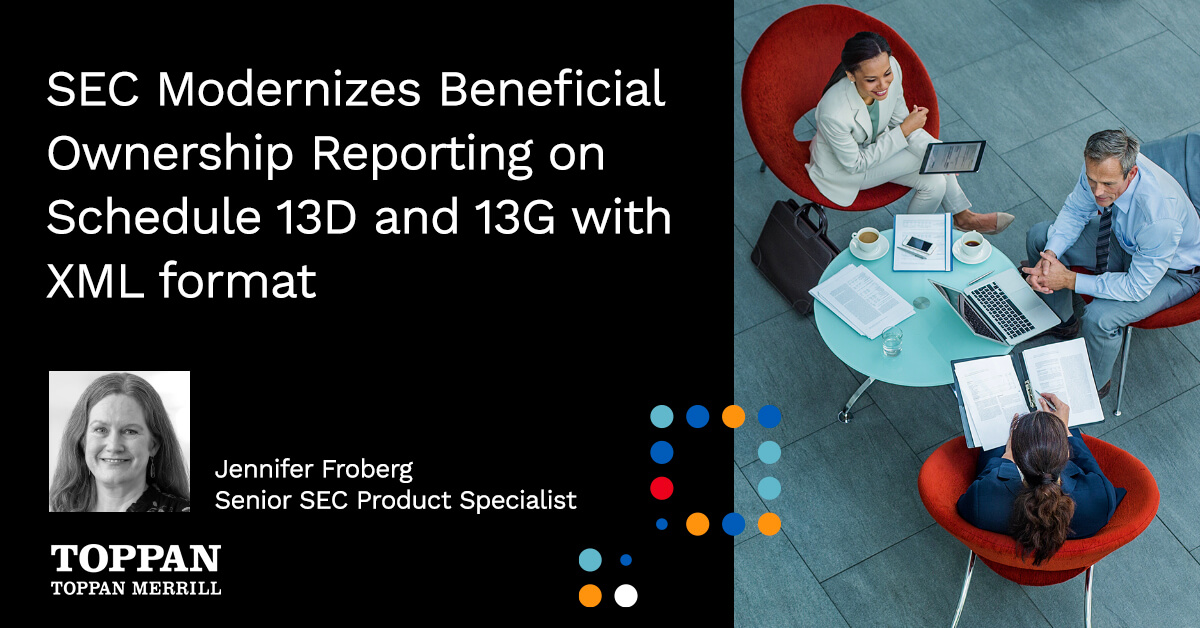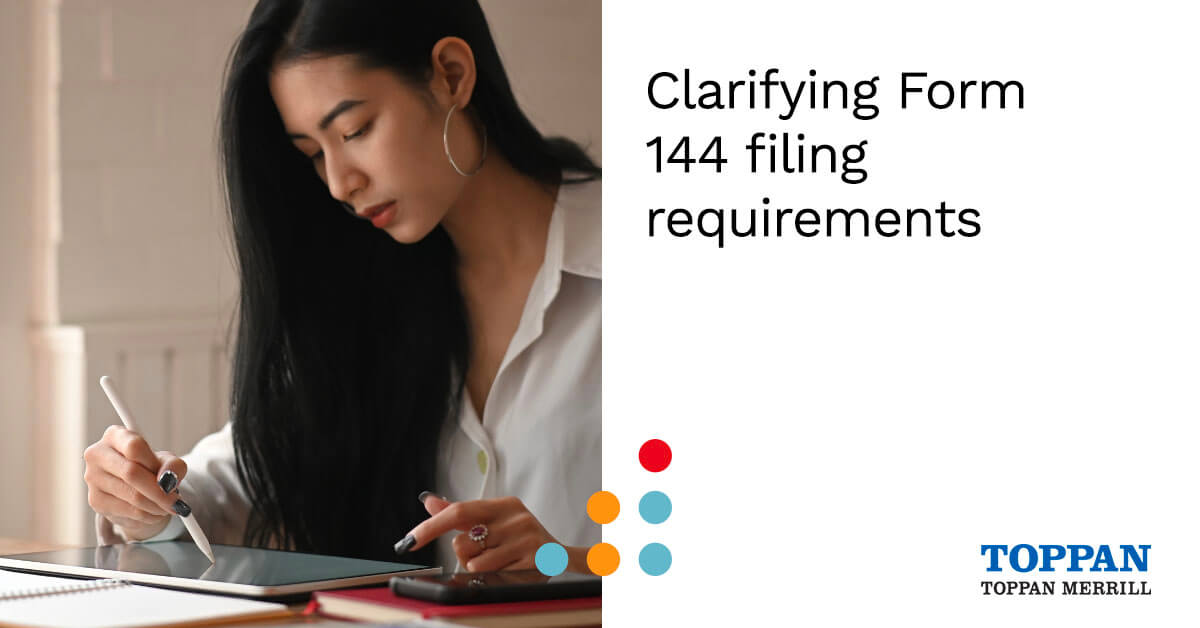In 2021, the SEC received over 30,000 Form 144 filings. Of those, only 234 were submitted electronically on the EDGAR system. The SEC is changing that by requiring filers to submit Form 144 filings on EDGAR and in XML format. This is another step in the SEC’s ongoing modernization of data and disclosure through structured data reporting, including XML and Inline XBRL.
Why Form 144 matters.
Form 144 conveys important information to the SEC and the market. Under Rule 144, any planned sale of restricted or controlled stocks in a public company, which are held by an executive officer, director, or affiliate of a company, must be reported to the SEC. When any of these entities place an order to sell a company’s stock, then they must file Form 144 with the SEC when it meets the following conditions:
- During any three-month period in which the sale volume exceeds 5,000 shares
- Or has an aggregate sale price of more than $50,000
This information is key to the market because it tracks securities flowing from private hands to the public markets. The SEC notes in the final rule that the Form 144 data is so valuable that the people review paper 144 filings in the SEC public reference room to determine how many shares are being sold and in what companies. Currently, the Public Reference room is closed due to the Covid pandemic. Reporting Form 144 data in XML format will make it publicly accessible and easily analyzable and comparable.
EDGAR, XML mandate and timing
On June 2, 2022, the SEC adopted a key final rule “Updating EDGAR Filing Requirements and Form 144.” Surprisingly, several SEC form types are allowed to file in paper currently, including some 6-K filings, Form 144 and other filings. The mandate will eliminate that option and require filing on EDGAR. The transition to filing Form 144 on EDGAR in XML format will be a significant impact on filers.
The SEC is providing a six-month transition period to help filers prepare. We do not know the exact compliance date yet. Six months after the SEC provides updated XML technical specifications and adopts the EDGAR Filer Manual, then EDGAR filing Form 144 will be required.
Practical steps to prepare
- Obtain EDGAR Filing codes
- Filing on the EDGAR system requires filing codes. If you do not have codes yet, you will need to apply to the SEC. As part of the Form 144 transition, the SEC expects over 9,000 new Form ID applications for EDGAR access codes. The SEC must review and approve every request. This could lead to a bottleneck in new Form ID applications. We have helpful documentation on the process to submit a Form ID to the SEC.
- Review the SEC’s Form 144 template
- The SEC plans to provide an online portal to assist filers. The rule modifies some of the disclosure items but most of the current form data will be required in XML. The new format requires specific data in each field and in a specific format. If any data is missing or in the incorrect format, then it will cause validation issues.
- Ensure your filing agent/provider is ready for the mandate
- Filers can submit their own Form 144 on EDGAR. A self-service filing option like SEC Connect will take the guesswork out of filing Form 144.
To find out how Toppan Merrill can help you meet the new SEC Form 144 filing requirements, contact us:
Email: [email protected]
Phone: 800.688.4400



